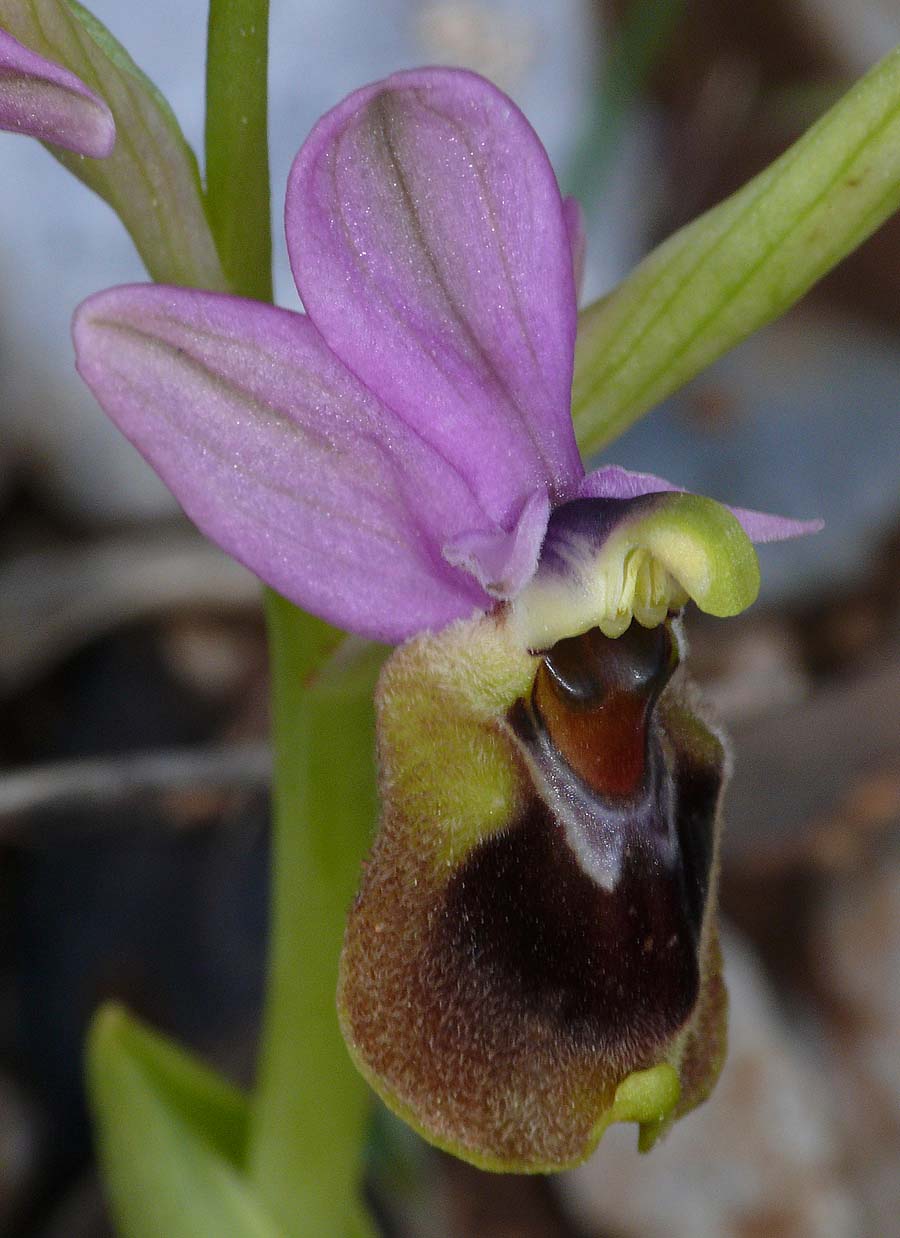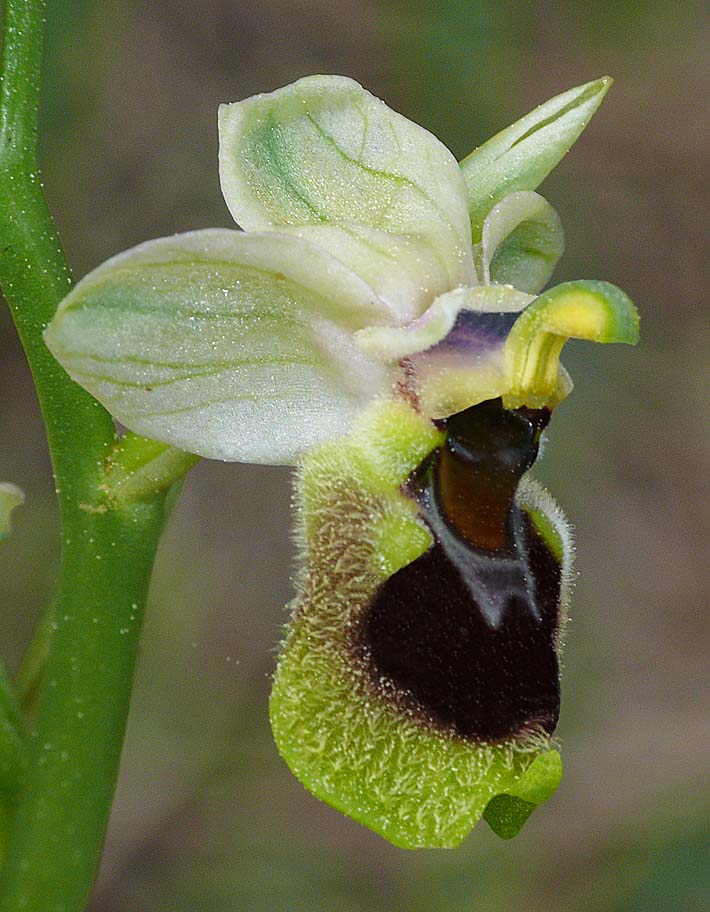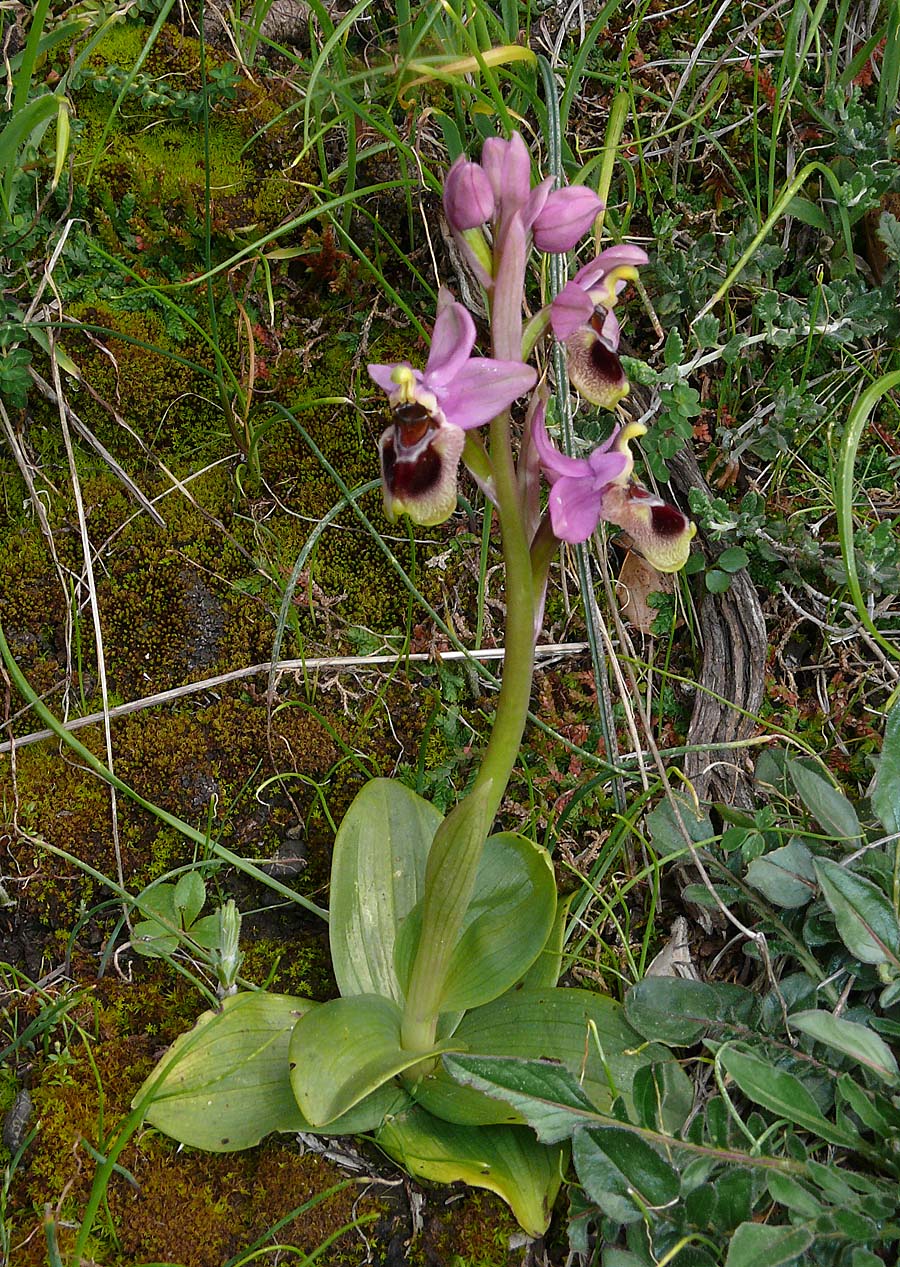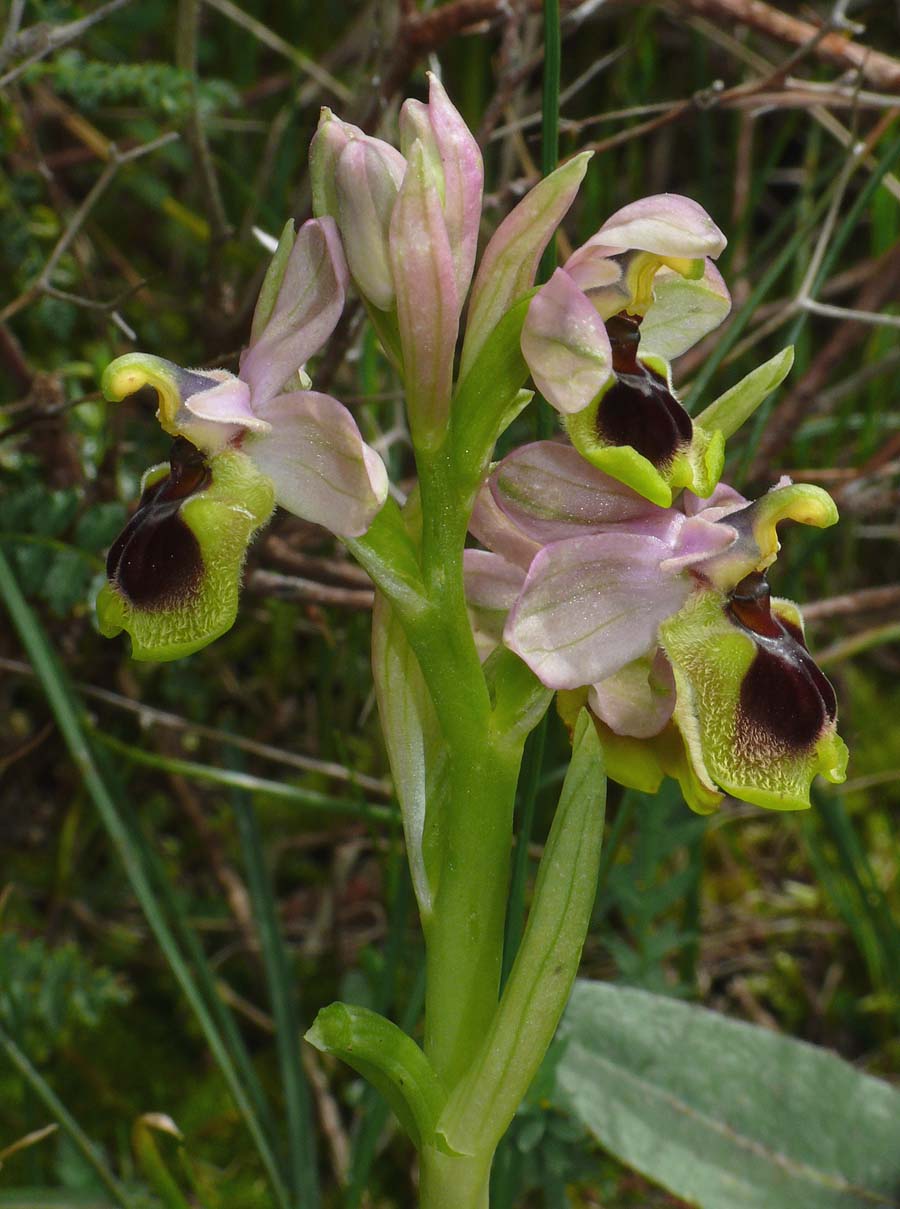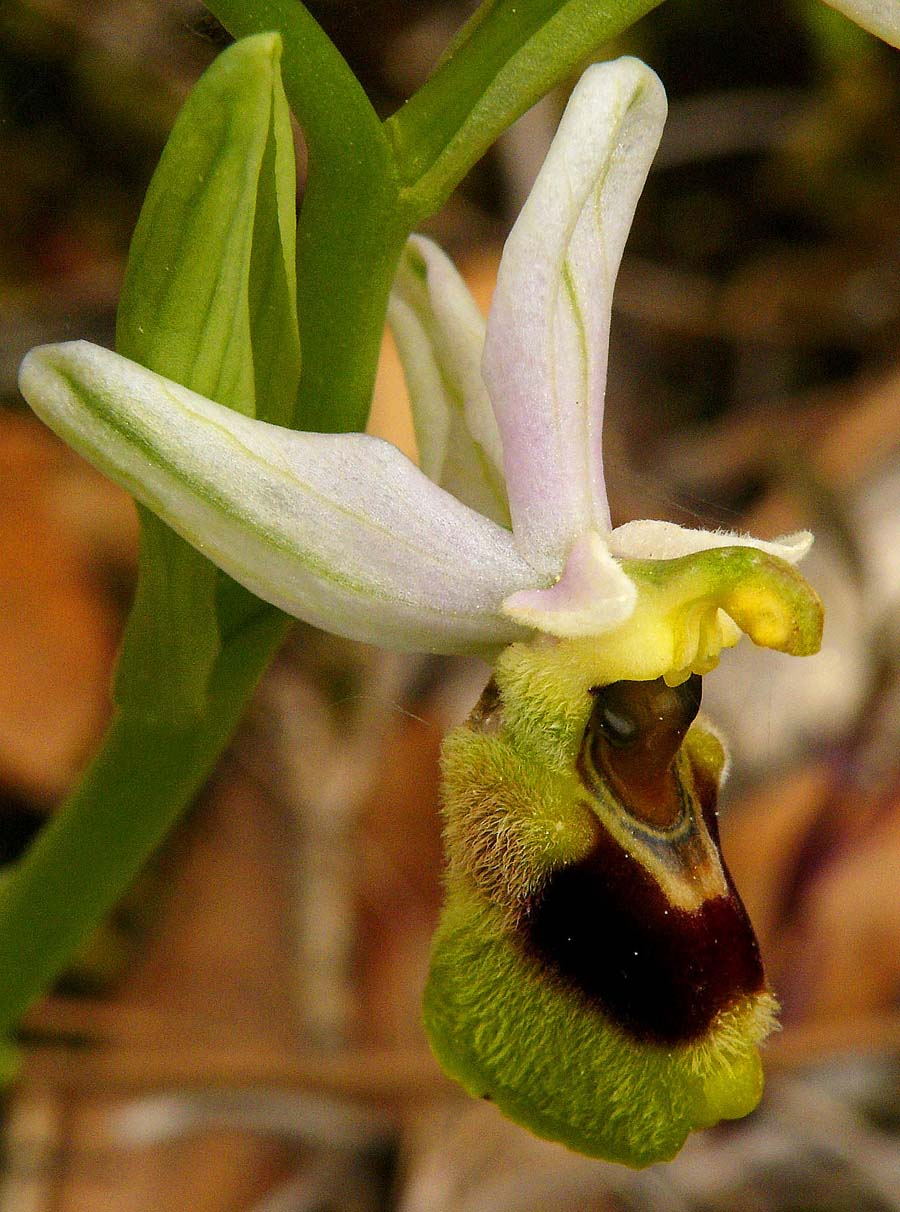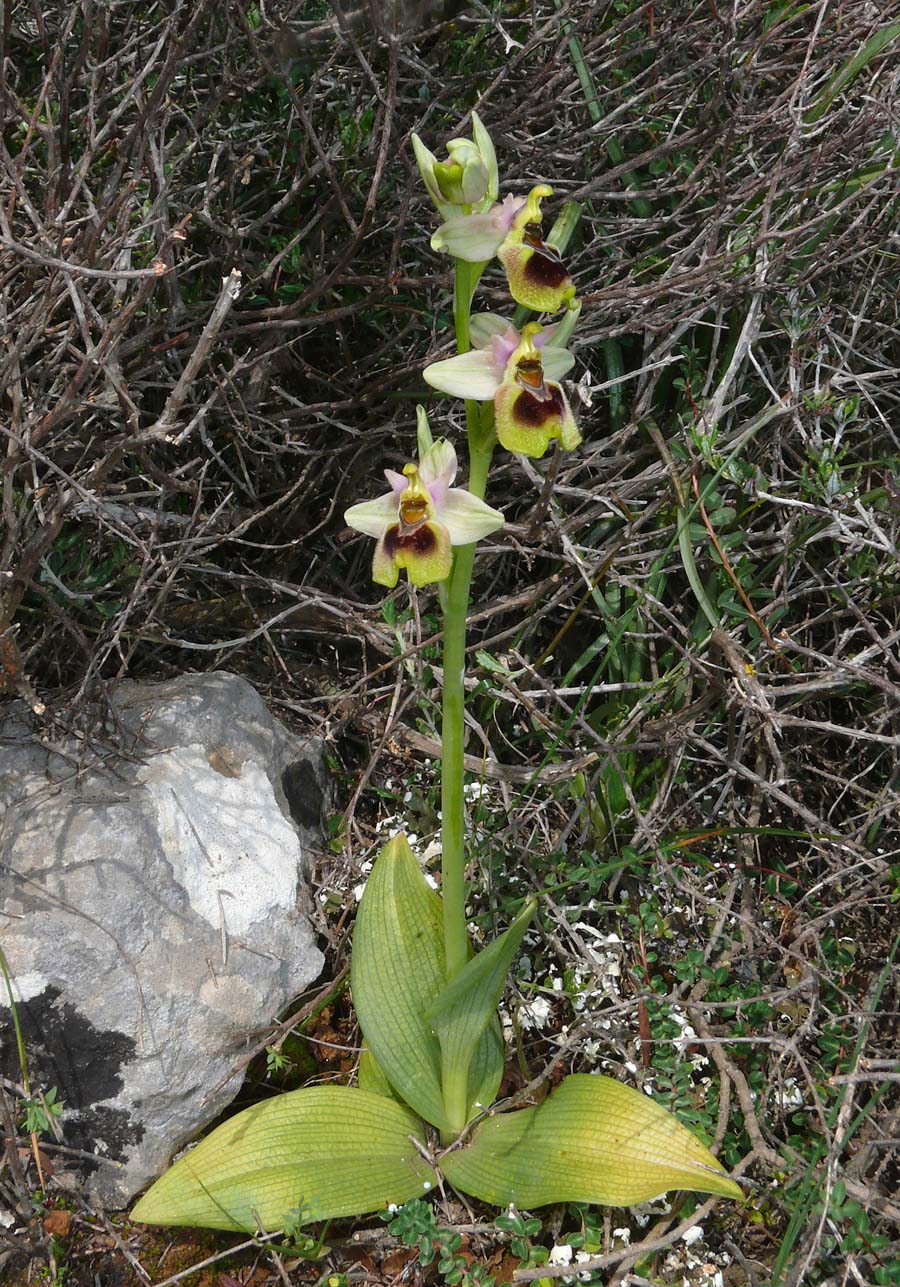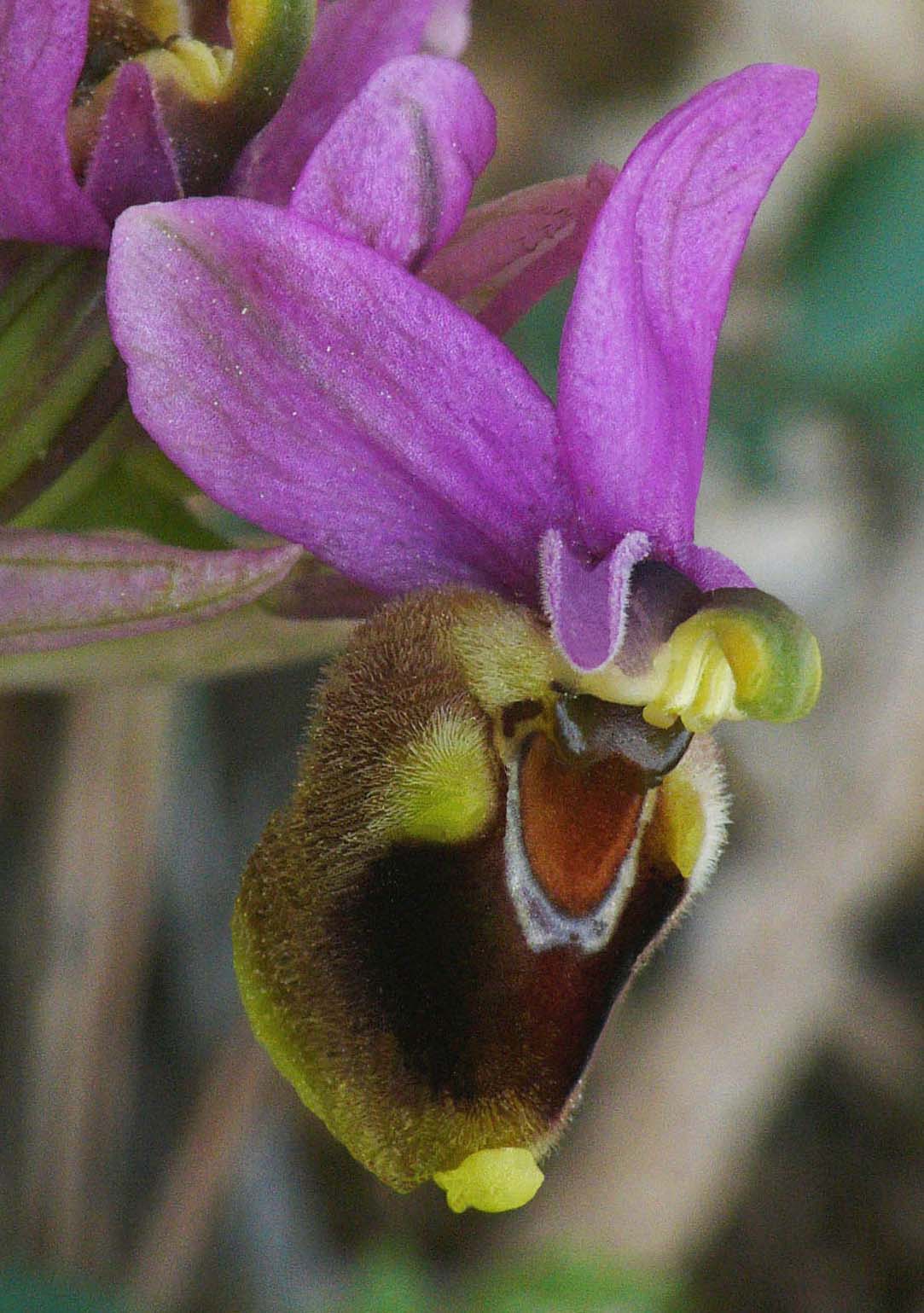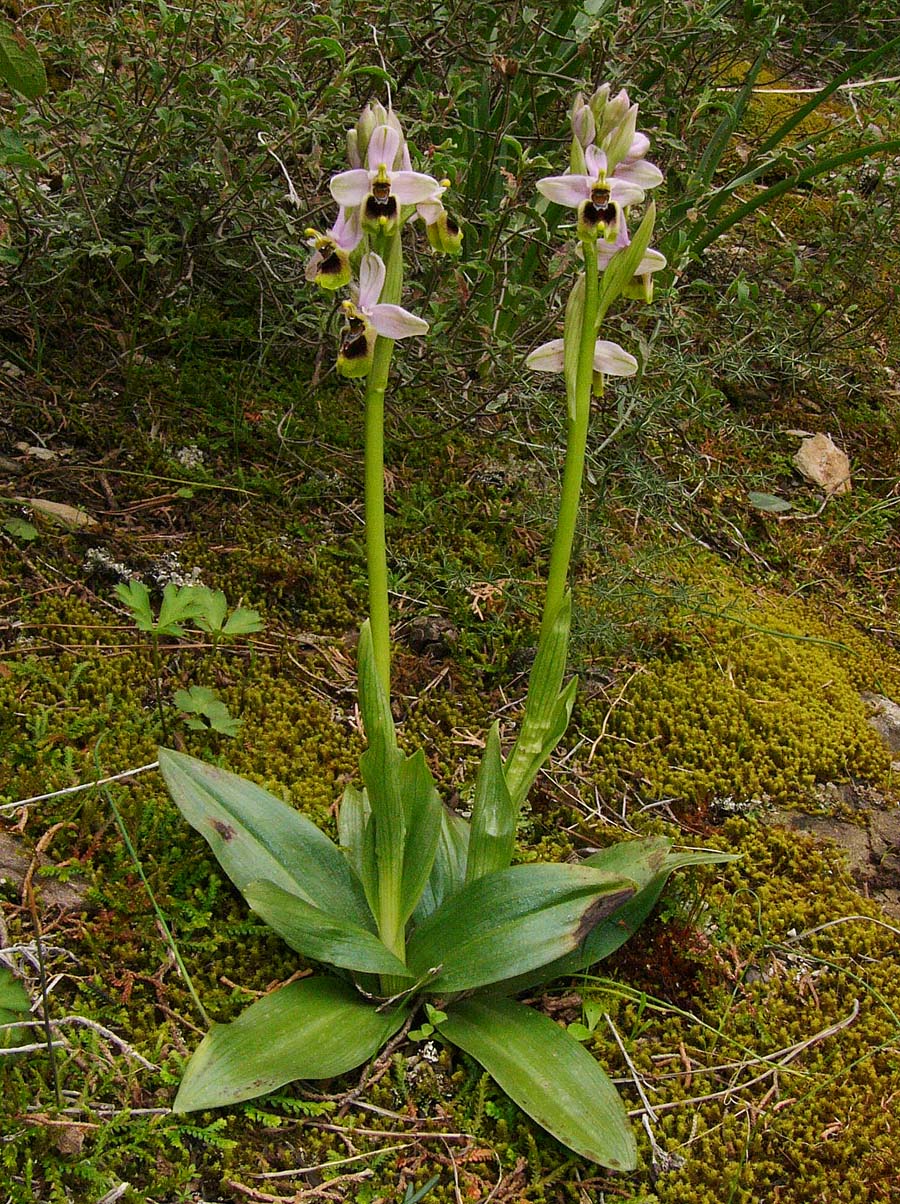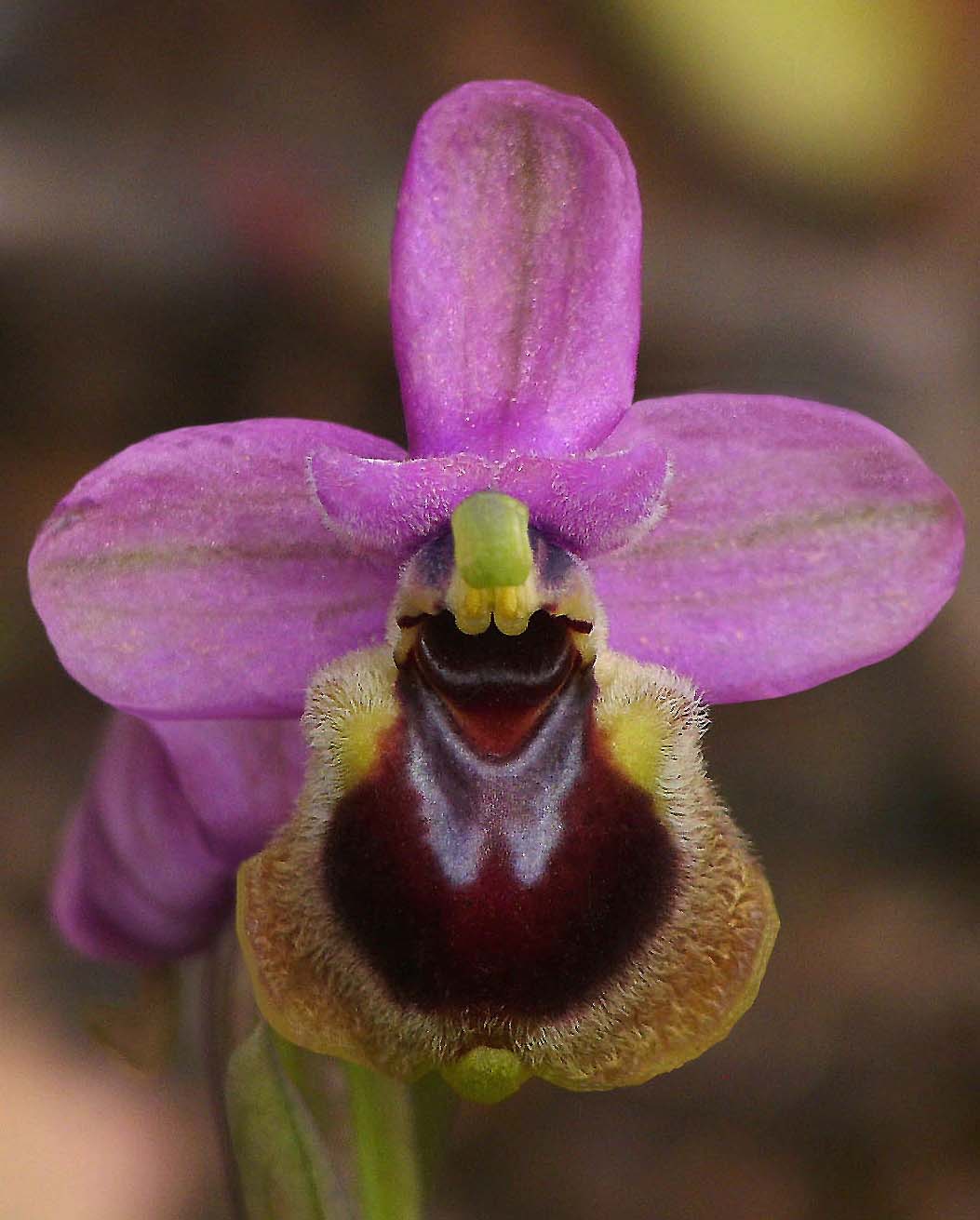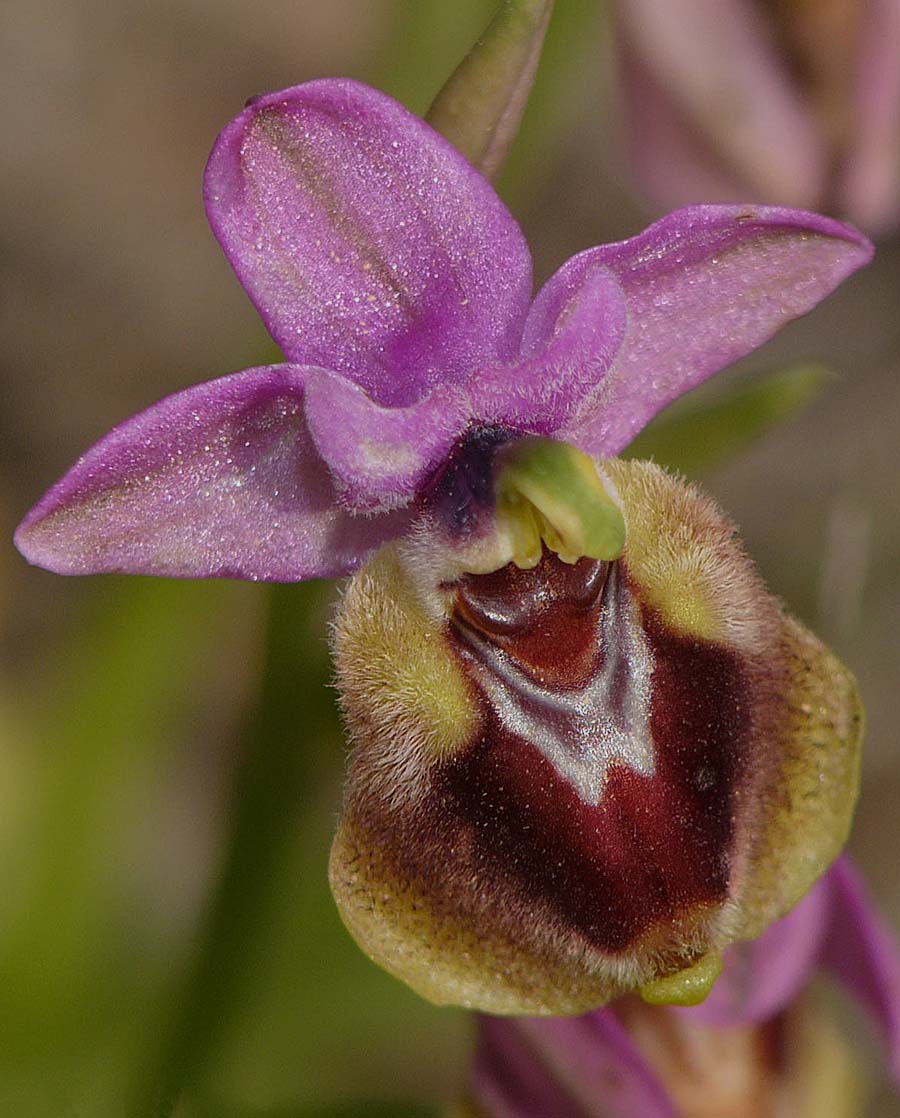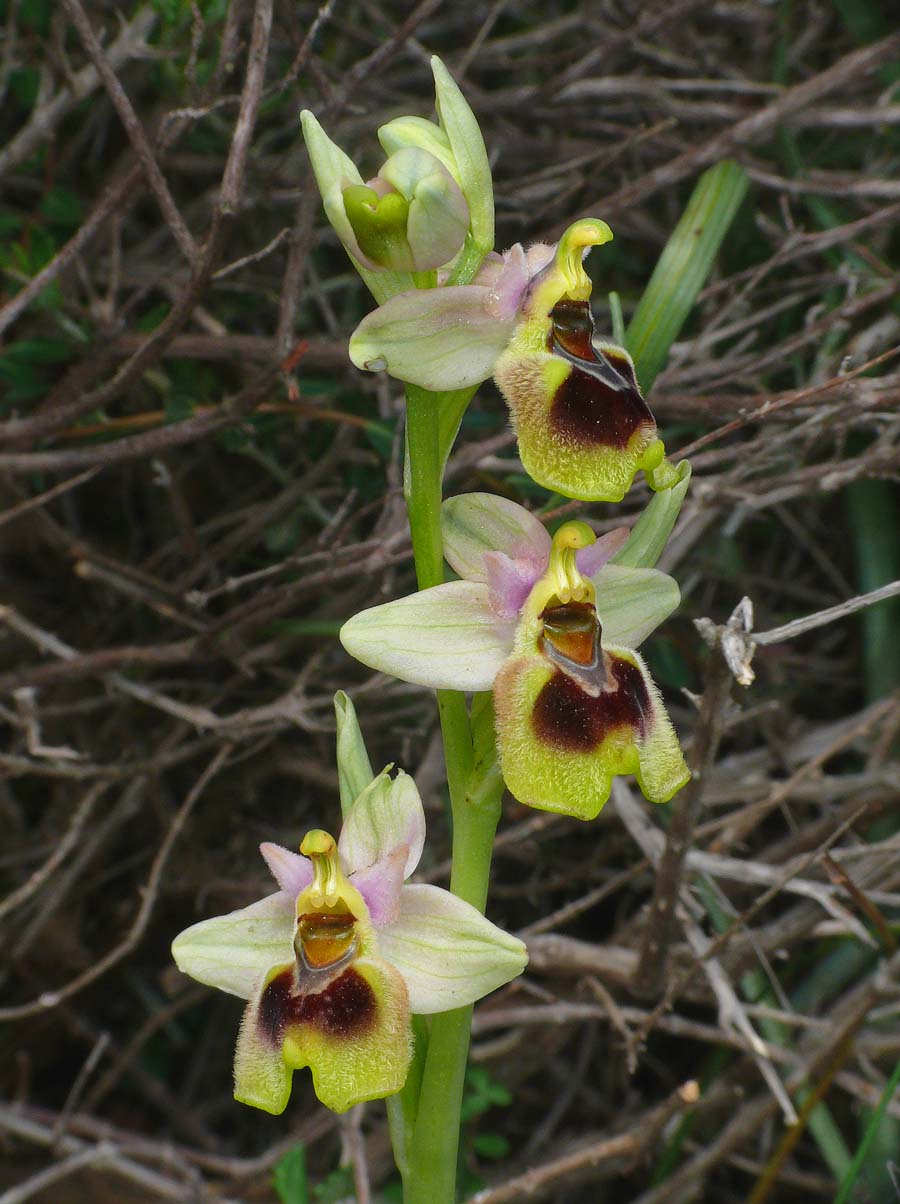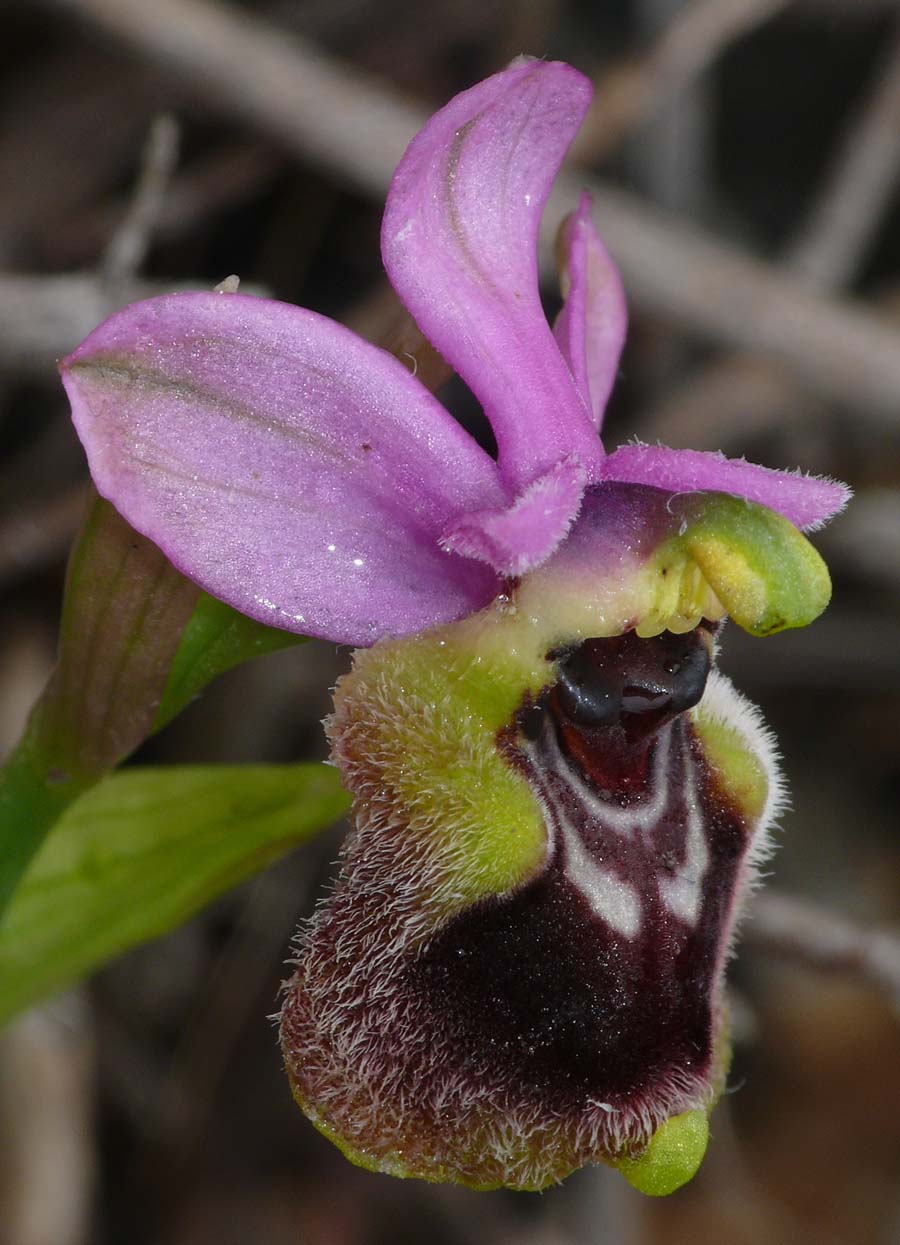O. leochroma is an eastern Mediterranean representative of the O. tenthredenifera group whose name is a reference to its hairy lip, thought to
resemble a lions mane. Until recently this taxon was considered to be
within the natural varietal range of O. villosa but later
studies and perhaps most importantly, work carried out in Crete by
Delforge (2005) has now determined that O. villosa is not a single species but a polytipic taxon which has now been split into four additional new species. (O. dictynnae, O. ulyssea , O. korae and O. leochroma)
Of the now five species, O. villosa is the latest to bloom in mid March but it has much the shortest season, being largely finished by early April, at which time the longer lasting O. leochroma, which first appeared at much the same time, will still be in full flower. As a result of the reclassifications, O. leochroma is the most widely distributed, being found in continental Greece, the Aegean and Turkey. The biggest overlap in range of the new species is between O. villosa and O. leochroma, and in Crete particularly, differentiating the two in the field is far from straightforward, as although there are some formally described morphological differences, these do not seem to be unique and can be inconclusive in many cases.
Typically O. leochroma exhibits a longer lip when measured from stigmatic cavity to appendage, more intensely coloured perianth and a hairier border though the authors have failed to find any conclusive evidence for this. It is further said to be a larger and darker flower but although O. villosa may more often be paler, both species appear to produce darker and lighter morphs. O. leochroma is reported to be a more robust plant with a larger number of flowers per stem but again, whilst this may be a reasonable generalisation, it is not diagnostic. In reality, the only sure way to separate the species is in the field, by study of their flowering period and where possible by identification of the pollinator. The authors acknowledge that this species description is unsatisfactory but until greater clarity is available we cannot be more precise. The pictures are from Crete and the Aegean dating from the first week of April.
Of the now five species, O. villosa is the latest to bloom in mid March but it has much the shortest season, being largely finished by early April, at which time the longer lasting O. leochroma, which first appeared at much the same time, will still be in full flower. As a result of the reclassifications, O. leochroma is the most widely distributed, being found in continental Greece, the Aegean and Turkey. The biggest overlap in range of the new species is between O. villosa and O. leochroma, and in Crete particularly, differentiating the two in the field is far from straightforward, as although there are some formally described morphological differences, these do not seem to be unique and can be inconclusive in many cases.
Typically O. leochroma exhibits a longer lip when measured from stigmatic cavity to appendage, more intensely coloured perianth and a hairier border though the authors have failed to find any conclusive evidence for this. It is further said to be a larger and darker flower but although O. villosa may more often be paler, both species appear to produce darker and lighter morphs. O. leochroma is reported to be a more robust plant with a larger number of flowers per stem but again, whilst this may be a reasonable generalisation, it is not diagnostic. In reality, the only sure way to separate the species is in the field, by study of their flowering period and where possible by identification of the pollinator. The authors acknowledge that this species description is unsatisfactory but until greater clarity is available we cannot be more precise. The pictures are from Crete and the Aegean dating from the first week of April.
